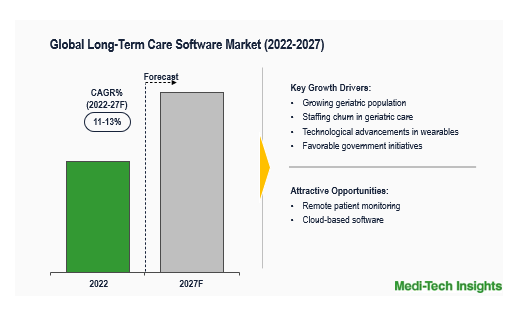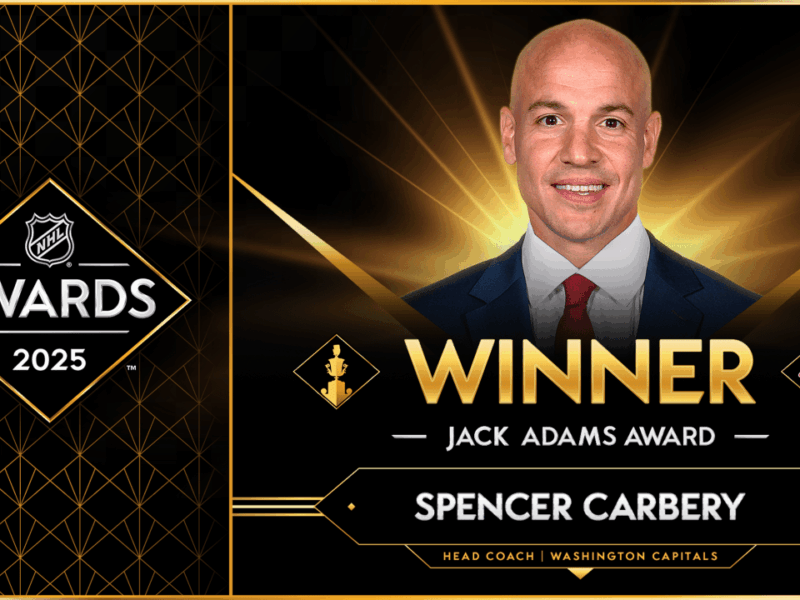Global long -term care software market CAGR of 11–13% by 2027 is expected to be seen. The growing population of slightly healing, churning in a medical care, technological progress to wear, and government initiative in the region are some of the major factors running the market development.
Long -term care software is used for managing and supporting long -term health care facilities such as home healthcare services such as home healthcare services such as nursing homes, assisted living facilities, hospitals, and independent living services. Long-term care software includes diagnostic software (EMR/EHR, e-discrying, electronic medical administration records, clinical decision support system) and non-closeware [Real-time locating systems (RTLS), Billing, Invoicing, & Scheduling, Payroll Management, among others]
Click here to get our sample PDF report for Medical Devices Market:
https://meditechinsights.com/long-term- Care-Software- MARKET/Request-SAMPT/
Increasing aging population increases the demand for long -term care software solutions
WHO estimates that by 2030, around 1/6 people in the world will be over 60 years of age. This trend is expected to continue as developing countries have started increasing the expectations of life. Many developed countries have already important elderly population in population, for example, 29% of the population in Japan is more than 65 and similar trends are being seen in many European countries. China is looking at a similar problem where by 2050, ~ 40% of the population will exceed the age of retirement, increasing its dependence from 37% to 70% in 2050 in 2015. The UK has seen an increase in dependence from 1/10 dependents to producing individuals, which is 1/3 at the present time at the beginning of the social state. These population imbalances are important drivers for long -term care software because low ratio of population is taking care of more elderly patients.
Healthcare staff shortage long -term care software is likely to increase market demand
A second important driver to adopt long -term care software is a high level churning seen in the healthcare sector. There is a current shortage of more than 1 million workers in the European Union, it is determined to continue the trend. Similarly, churning from healthcare workers in the US has been observed. Patients can be seen due to lack of healthcare staff. Long -term care software can reduce the time of spending on individuals by health professionals in many ways:
- Regular tasks automated: Long -term care software can automate regular functions, such as drug management, scheduling and billing. This can free the employees' time and allow them to focus on high-value tasks, such as the patient's care
- Improvement in communication and cooperation: Electronic Health Records (EHRS) allow many providers to reach and update the patient records in real time, reducing the requirement of manual data entry and improves information accuracy. Central storage of patient data negates the need to physically assemble and transfer files
- Enabling distance care: Remote Care (Telehealth or Telemedicine) allows health professionals to take care and monitor patients from distance. This is particularly useful in areas where there is a lack of health professionals. These solutions reduce the cost of healthcare, remove obstacles for healthcare and often improve patient results. Examples of telehland solutions include:
- Remote monitoring tool: Wearable equipment and mobile apps collect patient data such as glucose levels, pulse and oxymetry information and provide warnings for patients such as patients like falls
- Video medicine: The use of video assessment frees the healthcare professional time for less complexity or repeating problems in patients, which increases employees' efficiency
- Providing decision support: Long -term care software decisions can provide assistance tools that help healthcare professionals to make informed decisions about the care of the patient. For example, the clinical decision support system can provide alerts and recommendations based on patient data, help improve the quality of care and reduce the risk of errors.
Get PDF Report for competitive analysis:
https://meditechinsights.com/long-term- Care-Software- MARKET/Request-SAMPT/
The partnership for software providers to expand its customer base and capabilities has emerged as a common strategy
Long -term care software companies have been entering partnership with other software companies with long -term care software companies to set their foot in the market.
For example,
- In October 2022, Painchek (A major pain evaluation tool provider) signed a marketplace partnership agreement with a major care management software system provider, point -click care ink for nursing homes (long -term aging care) in USA and Canadian markets. The integration of Penchec in the pointClicker platform will provide a spontaneous transition to the assessment of pencheake pain in the residential information system of the nursing home for the USA and Canadian markets. PointClickCare will promote penchecch integration capacity to its nursing home customers in USA and Canada through its website, and will be determined to face regular client events.
North America is expected to have a large part in long -term care software market
Long -term care software market has been growing strong in America. Baby Boomers (Born between 1946 and 1964) are a generation that defines from a period of strong population growth, now reaching an advanced age. According to estimates, by 2030, all boomers in the US will be over 65 years of age and will represent 21% of the population. According to the US Census Bureau, by 2034, the number of adults over 65 years of age will reach 77 million, while people under the age of 18 will do 76.5 million. This inflammation number of older adults is expected to increase demand for help and home care and demand long -term care software.
Competitive landscape analysis: long -term care software market
Some of the some of the leading players working in the Global Long-Term Care Software Market are Net'smart Technologies, MatrixCare, Surner Corporation (acquired by Oracle), Veluski and Pointcicycare. These companies offer a wide range of software solutions, from electronic health records (EHRs) to financial management and analytics tools to meet the diverse requirements of long -term care features.
About Medi-Tech Insights
Medi-Tech Insights is a healthcare-centric business research and Insights firm. Our customers include Fortune 500 companies, blue-chip investors and hyper-goth start-ups. We have completed 100+ projects in market assessment, fixed hard work, competitive intelligence, market size and forecast, pricing analysis and Go-to-Market strategy in digital health, healthcare IT, medical technology, medical devices and pharma services. Our functioning includes joint rigorous secondary research with deep-grated interviews with industry-agron CXO, VPS, and major demand/supply side decisions.
contact:
Haloti route
Associate, Medi-Tech Insights
+32 498 86 80 79
info@meditechinsights.com
Discover more from Daily Hind News
Subscribe to get the latest posts sent to your email.



